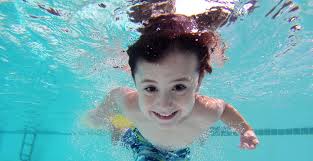Every Aussie kid grows up hearing the same advice: never swim alone, always swim between the flags, don’t run near the pool. But while most of us remember the basics, how many actually have the practical skills to respond in an emergency—whether that’s helping someone struggling in the surf or managing our own panic in open water? That’s where a water safety course becomes more than just a learning opportunity—it becomes a lifeline.
This article breaks down what a Level 2 swimming qualification involves, why it’s important, and how courses like these can save lives—not just in theory, but in real-world moments when every second counts.
Understanding Level 2 Swimming and Water Safety Skills
A Level 2 swimming qualification typically focuses on consolidating core aquatic skills. At this stage, participants are expected to demonstrate confidence in the water, swim multiple strokes over reasonable distances, and begin developing rescue techniques. While early levels emphasise water familiarisation, Level 2 marks the transition to competency.
A quality water safety course at this level helps learners:
- Improve endurance across multiple strokes (freestyle, backstroke, breaststroke)
- Practice basic rescue techniques like reach and throw rescues
- Recognise and respond to risks in different aquatic environments (pools, rivers, beaches)
- Manage breathing, floating, and treading water over extended periods
Unlike recreational swimming lessons, these courses emphasise safety decision-making and problem-solving, especially in unfamiliar or uncontrolled settings.
Why Every Australian Should Complete a Water Safety Course
Australia’s coastal culture is a blessing—but also a risk. With over 11,000 beaches and a massive network of inland waterways, water is everywhere. According to Royal Life Saving Australia, hundreds of preventable drowning incidents happen each year, with a significant number occurring in rivers, lakes, and backyard pools.
The best defence? Education.
A structured water safety course equips individuals of all ages with practical strategies for staying safe and helping others. These programs instil confidence, eliminate fear-based reactions, and create awareness of hazards like rips, submerged objects, or sudden drop-offs.
It’s also not just about the beach. Skills learned in these courses are transferable to camping trips, school excursions, and community sports—wherever water is involved, preparation matters.
Real Stories, Real Impact
Let’s talk about 14-year-old Jesse from rural New South Wales. After completing his Level 2 water safety course through school, he knew how to assess danger signs in still water. A year later, while hiking with mates, Jesse noticed a younger kid slip into a dam. His instincts kicked in—he didn’t jump in recklessly, but threw a branch and yelled instructions until help arrived. The outcome? One wet kid, zero injuries—and a big dose of quiet heroism.
Or consider Priya, a new migrant in Melbourne who had never learned to swim. She enrolled in a water safety course as an adult and went from fearing the deep end to confidently swimming laps. On a family holiday to Phillip Island, she calmly helped her niece out of a strong current near the shore, using the reach-rescue skills she’d practised just months before.
These aren’t dramatic TV rescues. They’re everyday moments that could have ended in tragedy—but didn’t.
Who Needs Level 2 Water Safety Training?
Short answer: almost everyone.
But here’s a more specific look:
- School-aged children: Critical developmental stage for coordination, confidence, and learning peer rescue skills
- Parents and carers: Especially those supervising pools or taking young children to public aquatic centres
- Teachers, youth workers, and coaches: People often responsible for group activities near water
- New Australians: Many arrive from non-aquatic cultures and need both swimming skills and contextual safety knowledge
- Older adults: Age-related strength changes don’t remove water risks—if anything, they increase them
Each water safety course builds progressively, and Level 2 lays the groundwork for higher aquatic qualifications like Bronze Medallion or professional lifeguard training.
Course Structure and Expectations
Most Level 2 programs are offered through local swim schools, community organisations, or government-backed providers. While exact formats vary, a solid program typically includes:
- 8–12 sessions over 4–6 weeks
- A mix of theory and pool-based practice
- Assessment of survival strokes, basic rescues, and hazard recognition
- Instructors with formal water safety qualifications and hands-on experience
Some providers also simulate open water conditions in controlled environments—using waves, currents, and sudden immersion to prepare learners for real-life unpredictability.
To see what a high-quality program looks like, browse an accredited water safety course with clear progression pathways and evidence-based teaching methods.
Common Misconceptions About Water Safety Courses
Let’s bust a few myths:
“I already know how to swim—why do I need a course?”
Swimming laps is not the same as handling a rip, rescuing a panicking child, or reacting under pressure. Safety is a skill, not just a stroke.
“My kids are young—I’ll teach them myself.”
Unless you’re a trained instructor, that’s risky. Teaching bad habits early can delay real learning. Formal courses teach proper technique, risk assessment, and rescue logic.
“Courses are expensive.”
Not always. Many community programs are subsidised or free. Plus, the cost of not knowing how to respond in an emergency? Far higher.
How to Choose the Right Course Provider
When picking a provider for a water safety course, look for:
- National accreditation or endorsement by a recognised safety organisation
- Instructors with clear qualifications (ideally swim teaching and rescue certified)
- Positive reviews and clear course outlines
- Low instructor-to-student ratios
- Pathways for progression to advanced levels
A good course won’t just teach you how to stay afloat—it’ll teach you how to stay in control.
Conclusion: A Lifesaving Investment
Whether you’re a parent, a student, or someone who’s never set foot in a pool, a water safety course is one of the smartest choices you can make. You’ll gain confidence, calm under pressure, and possibly save a life one day—including your own.

